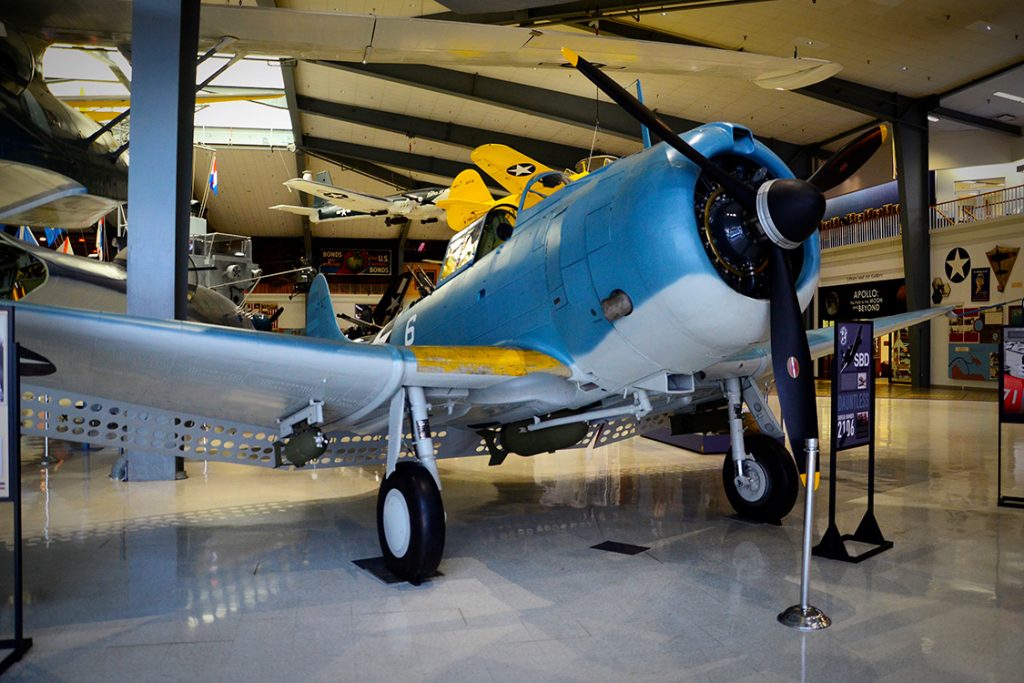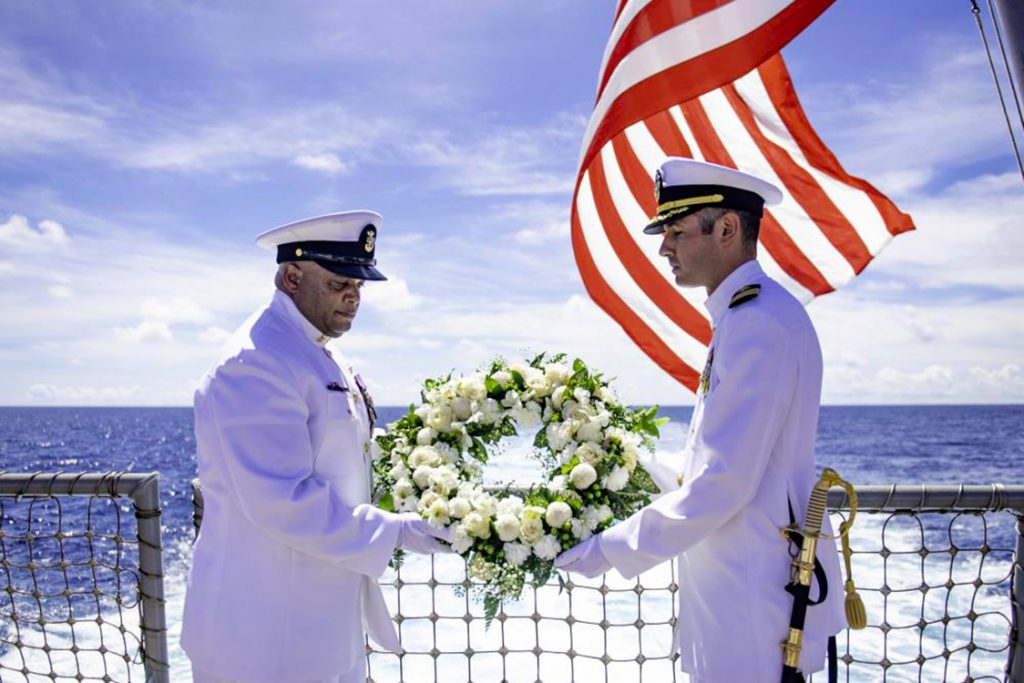Pensacola, Florida – As May rolled into June in 1942, Japan’s naval forces stretched across the Pacific. They had seized Malaysia, Singapore, the Dutch East Indies, the Philippines, and the northern coast of Papua/New Guinea.
From Ensign Lyndsay R. Ballew — US Navy — 03 June 2022 —
Intelligence provided by U.S. Navy cryptologists had allowed the U.S. to thwart an attempted invasion of Port Moresby with the Battle of the Coral Sea, the first carrier battle of the war. However, cryptologists, like the ones training here today, also uncovered Japanese plans to take the outpost at Midway. Though small, Midway would be a critical strategic location allowing the Japanese to threaten Hawaii directly. Reinforcing and defending the island was crucial.
By late May, Japanese forces were underway for Midway. Among them were the carriers Akagi, Kaga, Soryu, and Hiryu with a total of 229 embarked aircraft. An additional 17 patrol seaplanes were housed on accompanying ships.

American forces raced to meet them with a strike group formed around the carriers USS Enterprise (CV-6), USS Hornet (CV-8), and USS Yorktown (CV-5). The group provided 234 aircraft afloat in addition to the 110 fighters, bombers, and patrol planes at Midway.
At 6:16 in the morning of June 4, Marine Corps pilots from Midway engaged an approaching enemy formation of bombers being escorted by Zeroes just 30 miles away. The American fighters inflicted some damage, but were too outnumbered to halt the enemy approach. The first bomb fell on Midway at 6:30 a.m.


As the Japanese planes returned to refuel, Midway launched its own attack on the Japanese carriers. Marine Corps Dauntless and Vindicator bombers, Navy Avenger torpedo bombers, and Army Air Force B-26 Marauder and B-17 Flying Fortress bombers repeatedly attacked the Japanese forces. They inflicted relatively little damage to the large fleet, but fought fiercely while aircraft from the American carriers were deployed for the attack.
Navy torpedo bombers were first to engage from the American carriers. They flew in low and although nearly wiped out by the defending Japanese, they drew off enemy fire and left the skies open for dive bombers from the Enterprise and the Yorktown. The Japanese carriers were exposed and the American bombers quickly crippled carriers Akagi, Kaga, and Soryu.
The last remaining Japanese carrier, Hiryu, launched her aircraft for a counter-attack on the Yorktown, damaging her severely enough to force her abandonment. That afternoon, however, aircraft from the Enterprise attacked and mortally damaged the Hiryu.
With all four carriers out of the battle, the Japanese invasion of Midway was abandoned.
For the next two days, American forces pursued and attacked the retreating Japanese. Salvage operations attempted to save the Yorktown, but were interrupted by torpedoes from a Japanese submarine. Yorktown sank at dawn on June 7.
The battle’s losses were significantly greater for the Japanese fleet. The Japanese offensive in the Pacific was derailed. The Battle of Midway marked the start of a shift in the balance of sea power in the Pacific Theater, making it one of the most significant conflicts of World War II.
The only known surviving aircraft from this historic conflict, a Douglas SBD Dauntless, which had also survived the attack at Pearl Harbor, is currently on display at the National Naval Aviation Museum onboard NAS Pensacola.
This article was compiled using information gathered from the Naval History and Heritage Command and from Battle of Midway Combat Narratives published in 1943 by the Department of the Navy.

[1] The museum’s Dauntless is one of the most historically significant aircraft in the collection. It survived Pearl Harbor and attacked Japanese shipping in New Guinea while flying from USS Lexington (CV 2) on March 10, 1942. The lone remaining airplane to have participated in the Battle of Midway in June 1942, it returned from an attack against the Japanese fleet with over 200 bullet holes in its fuselage, the patches covering them still visible in places on the airplane.
Read alsothe series of articles on « the lessons of the battle of Midway » in European-Security (2005) by Admiral Guy Labouérie, French Navy,










